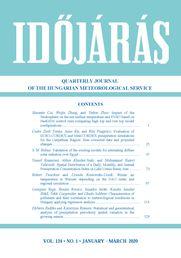Investigations of the long-term observations of climate variables, as a practical approach to monitor climate changes, have attracted the interest of many researchers around the world. One of the important variables in this context is precipitation. The investigation of precipitation, one of the most important meteorological factors directly affecting accessibility to water resources, is of special importance. In every region, studies of precipitation on daily, monthly, or annual scales provide important information on the distribution, concentration, and dispersion of precipitation, as well as some conclusions about the associated hydrological problems. In this study, the precipitation concentration was calculated and zoned by means of the precipitation concentration index (PCI) in the basin of Lake Urmia, using monthly and annual rainfall data of 42 selected rain gauge stations, from which 24 stations located in the West Azerbaijan province (in the west of Lake Urmia) and 18 stations located in the East Azerbaijan province (in the east of Lake Urmia) during 1984–2013. The results of the studies of the precipitation concentration index over the basin of Lake Urmia showed that the dominant concentrations of spring, autumn, and winter precipitation were moderate, indicating a moderate distribution for the precipitation of the months in these seasons. In addition, in the period under study, uniform and regular precipitation concentrations (PCI<10) were observed only in winter and in the borders of the basin. In summer, almost the entire surface of the basin (excluding its northeastern part) faced a strongly irregular distribution of precipitation, indicating irregular rainfall in July, August, and September. Most of the basin of Lake Urmia is covered by an irregular distribution of precipitation on an annual scale. By investigating the precipitation distribution in the first and the last 10 years of the statistical period considered and by comparing them, it was revealed that the greatest increase in the precipitation concentration index was in autumn, it rose by approximately 20.55 percent. According to the results, on the basin scale, the concentration index showed that the daily rainfall of the Lake Urmia basin was neither in regular nor in strongly irregular conditions at any of the stations studied. All the stations studied were in fairly regular, moderate concentration and fairly irregular conditions of daily precipitation distribution. The results also showed that the moderate concentration includes most of the daily precipitation distributions throughout the basin.

 letöltés [pdf: 24504 KB]
letöltés [pdf: 24504 KB]










